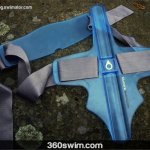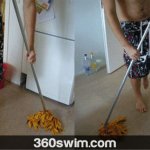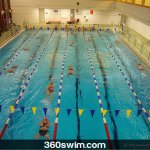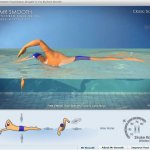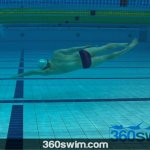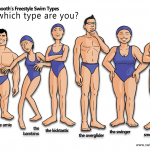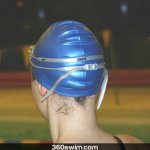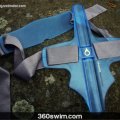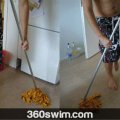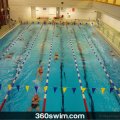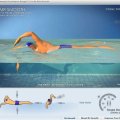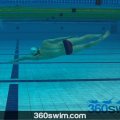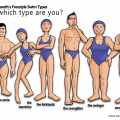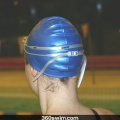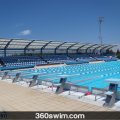DRYLAND EXERCISES FOR SWIMMERS (SWIMMING RELATED GYM PROGRAM)
To become a faster, stronger, and more injury-proof swimmer, you have to get out of the pool. Dryland training is just as important as the laps you put in, as it allows you to build foundational strength and fight gravity in a way that water never can.
This post lays out a blueprint for a great dryland program, focusing on building a powerful core, protecting your shoulders, and improving your overall fitness.
Dive Into: A Swimmer's Guide to Dryland Training
- Cardio for Endurance
- The Foundation: Core Stability
- Swim-Specific Strength: Resistance Pulling
- Injury Prevention: Shoulder Health
- Explosive Power: Medicine Balls
- More Fun Ways to Build a Strong Core
- The Payoff: How Dryland Helps Your Swimming
- Frequently Asked Questions
Cardio for Endurance
Running is a great way to keep in shape and improve your stamina. You do not have to run fast and long; a 15-30 minute light jog is just fine. If you hate running, try to do it a few times a week for a month, and you will find it becomes much more enjoyable.
If you cannot be bothered to go for a run, there are other fantastic options. Activities like cross-country skiing, kayaking, and cycling are not only great for endurance but also build incredible core strength, which is vital for swimming.
🎥 Watch: Cross-Country Skiing for Cardio
The Foundation: Core Stability
Bodyweight core exercises are the foundation of any good dryland program.
- Pillar stands
- Iso holds
- Stability ball movements, etc.
Basically, any time you work out your core, it is healthy for your posture and essential for keeping your body from snaking around the pool.
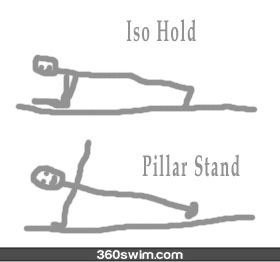

Swim-Specific Strength: Resistance Pulling
You can improve your underwater stroke without actually getting wet by using swim-specific resistance tools like:
- Swim bench
- Vasa trainer
- Biokinetic
- Stretch cordz
- Exer-Genie
Some of these are stationary, but others like the Exer-Genie are portable enough to take on a business trip.
🎥 Watch: Using the Exer-Genie
Injury Prevention: Shoulder Health
Using resistance cords or therabands goes a long way to keeping your shoulders healthy and improving their stability.
Utilize these in all possible motions and directions and remember: less resistance is more. You are working out the tiny stabilizer muscles in your shoulders, so no heavy lifting is needed.
🎥 Watch: Shoulder Cord Exercises
Explosive Power: Medicine Balls
Bouncing medicine balls are awesome and probably my favorite dryland tool. They will keep your muscles challenged and your workout exciting.
🎥 Watch: Medicine Ball Exercises
More Fun Ways to Build a Strong Core
If you need more variety, try a boxing class, tae bo, kickboxing, or yoga. All of these pay close attention to developing the core body, which is the essence of swimming.
🎥 Watch: Boxing for Core Strength
The Payoff: How Dryland Helps Your Swimming
After doing similar exercises for a while, you will feel very tight around your waist which will cause you to become more comfortable in the water.
You will finally be able to rotate your body from side to side with less effort and eliminate any unnecessary side movements with your hips.
So, don't waste another minute and give it a shot.
It works!!!
Frequently Asked Questions
Why is dryland training important for swimmers?
Dryland is crucial for strengthening your body to fight gravity, which is much harder than moving through water. It builds a strong core, which is the foundation of a good stroke, and is essential for preventing swimming-related injuries.
What is the most important part of a swimmer's dryland program?
Core stability is the essence of a swimmer's dryland routine. A strong core keeps your body from snaking through the pool, allows for a more powerful rotation, and provides a stable platform for your arms and legs to work from.
What are the best types of dryland exercises for swimmers?
A well-rounded program includes:
- 1) Endurance training like running or cross-country skiing
- 2) Core exercises like pillar stands and stability ball work
- 3) Swim-specific pulling with resistance tools
- 4) Shoulder health exercises with resistance cords
- 5) Power exercises with medicine balls
This combination ensures you build endurance, strength, and injury resistance.
Do I need a gym for these exercises?
Not necessarily. Many of the most effective exercises, like running, bodyweight core work, and resistance cord exercises, can easily be done at home with minimal equipment.
What are resistance pulling tools like a Vasa Trainer used for?
Tools like swim benches, Vasa Trainers, or stretch cords are designed to simulate the underwater pulling motion. They allow you to build swim-specific strength with added resistance, without having to get in the water.
 LNURL1DP68GURN8GHJ7URP0YHRXD3SWDMKJMFWVDHK6TMVDE6HYMRS9A4HSCNCWFXSH3NN0H
LNURL1DP68GURN8GHJ7URP0YHRXD3SWDMKJMFWVDHK6TMVDE6HYMRS9A4HSCNCWFXSH3NN0H
